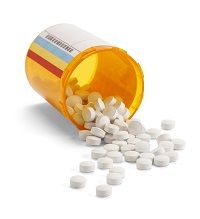Article
Guideline Cuts Inappropriate Opioid Prescription
Author(s):
Temple University Researchers suggest that a guideline created by Temple University Hospital and Temple University Hospital-Episcopal Campus for prescribing opioids in order to maximize safety and avoid misuse appears to significantly decrease the rate of opioid prescribing for minor and chronic non-cancer pain complaints in an acute care setting.

Temple University Researchers suggest that a guideline created by Temple University Hospital and Temple University Hospital-Episcopal Campus for prescribing opioids in order to maximize safety and avoid misuse appears to significantly decrease the rate of opioid prescribing for minor and chronic non-cancer pain complaints in an acute care setting.
Published in the January 2016 issue of the Journal of Emergency Medicine, the study found the impact to be immediate and sustained.
The results come in the midst of a prescription opioid abuse crisis in the United States where between 1999 and 2008 the rate of opioid overdose-associated deaths nearly quadrupled. The CDC has estimated that the rate of deaths related to prescription opioid overdoses now exceeds those from heroin and cocaine combined.Â
With acute care settings recognized as a major source of inappropriate opioid prescriptions, emergency physicians—including those at Temple—have identified themselves at targets for patients seeking opioids for nonmedical reasons. However, clinicians must find a balance between offering pain relief to those patients who truly need it and not creating or exacerbating drug dependence. Thus, the US Department of Health and Human Services has recommended the synthesis of pain management guidelines and the creation of clinical decision support tools.
“The impact of this type of guideline had never been studied in an acute care setting,†said principal investigator Daniel del Portal, MD, FAAEM, Assistant Professor of Clinical Emergency Medicine at the Lewis Katz School of Medicine at Temple University and Assistant Director of Clinical Operations at Temple University Hospital and Jeanes Hospital. “We hypothesized that the rate at which opioids were prescribed in the emergency department for dental, neck/back and chronic pain would decrease after adoption of the guideline. We also hypothesized that physicians would support the use of the guideline.â€
With a goal of determining whether a voluntary opioid prescribing guideline reduces the proportion of patients prescribed opioids for minor and chronic conditions, del Portal and colleagues performed a retrospective chart review of the records of 13,187 adult emergency department visits between January 2012 and July 2014 for dental, neck, back, or unspecified chronic pain.
The proportion of patients receiving opioid prescriptions at discharge was compared before and after the guideline. Additionally, attending emergency physicians were surveyed on their perceptions of the impact of the guideline on prescribing patterns, patient satisfaction, and physician−patient interactions.
The investigators found a significant and sustained decrease in the rates of opioid prescriptions for each pain type, all age groups, and each of 3 categories of complaints included in the study.
Overall, the opioid prescribing rate decreased from 52.7% before the guideline to 29.8% immediately following implication and to 33.8% when assessed at 12 to 18 months later. The guideline was supported by 100% of the 31 eligible prescribing physicians who completed the survey. Most (97%) felt the guideline had facilitated discussions with patients when opioids were being withheld. Almost 75% reported encountering less hostility from patients since adoption of the guideline.
“Emergency physicians and other acute care providers can use various tools to promote the rational prescribing of dangerous opioid medications,†said del Portal. “In contrast to electronic prescription drug monitoring programs, which show promise but require significant infrastructure and regulation (and are as yet unavailable to prescribers in Pennsylvania), an easily implemented guideline empowers physicians and protects patients from the well documented dangers of opioid misuse.â€Â





